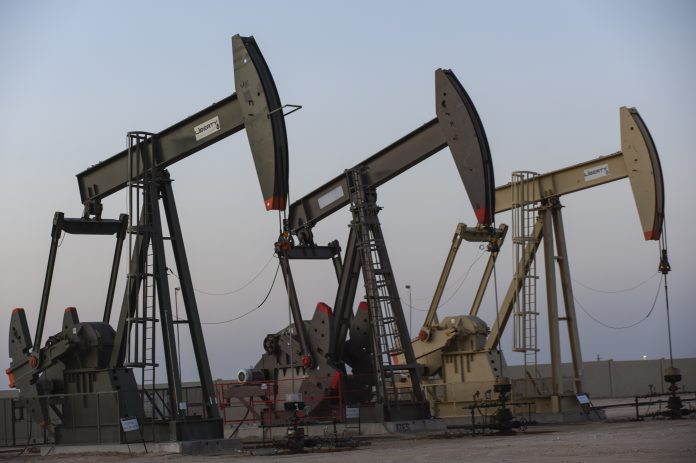The early-day oilfields in the 1920s and ‘30s into the mid-20th Century were so helter-skelter in their all-out drive to produce as much oil and natural gas as possible that working in them could be almost like going into combat against a well-armed enemy.
But the energy industry has become much more sophisticated and measured in the modern era and it’s made great progress toward making its workplaces safer.
“Safety is of paramount importance in the oil and natural gas industry throughout the value chain for the protection of workers and the communities in which we operate,” said Texas Independent Producers & Royalty Owners President Ed Longanecker from Austin. “Workplace safety covers a broad range of areas and procedures with effective training serving as the foundation.
“These safety protocols not only help to protect workers, they also contribute to operational efficiencies and environmental stewardship,” Longanecker said.
He cited the ExxonMobil Corp.’s 2022 environmental, social and governance report, which said the company achieved a 31 percent reduction in the most serious accidents from 2016-21 “with further improvement steps underway.”
Longanecker said the Apache Corp. “has significantly reduced severe injuries.
“Driving-related incidents are at their lowest in 10 years,” he said. “In addition, Apache has lowered incident rates by nearly 20 percent below targets in its total recordable incident rate and days away, restricted or transferred rate and the company improved its lost time incident rate, severe injury reports and vehicle incident rate goals by 50-70 percent compared to targets,” he said.
“It achieved an 11-percent reduction in TRIRs year over year and a 31 percent reduction in SIRs.”
Longanecker said the industry has formed the Oil and Gas Extraction Council, the National Service, Transmission, Exploration & Production Safety Network and the International Association of Oil and Gas Producers Safety Committee, which found in its 2021 report that the overall total recordable injury rate of fatalities, lost work day cases, restricted work day cases and medical treatment cases was .77 of a percent or 10 percent higher than it was in 2020.
He said a 2021 report by the American Petroleum Institute and Association of Oil Pipelines showed that operations and maintenance incidents impacting people or the environment had declined by 34 percent while 64 percent of pipeline incidents involved fewer than five barrels of oil and 84 percent fewer than 50 barrels.
“Crude oil and petroleum products delivered by pipelines had a 99.999-percent safety record for reaching their destinations safely,” Longanecker said.
The U.S. Bureau of Labor Statistics says the mining of coal, metal ore and non-metallic minerals is almost twice as dangerous as the onshore and offshore oilfield’s drilling, extraction and support work.
American oilfield deaths totaled 81 in 2017, 94 in 2018, 104 in 2019, 44 in 2020 and 58 in 2021.
The National Institute for Occupational Safety and Health says the most common oilfield accidents involve fingers being crushed by machinery, vehicle crashes, falls from heights, burns from fires and explosions and contact with toxic substances with a third of all such accidents in the nation occurring in the Permian Basin.
Apache spokeswoman Alexandra Franceschi said from Houston that her company encourages its employees to help increase safety.
“We foster a safety culture that empowers our workforce to share their thoughts about safety and stop any task if they observe conditions or behavior that they consider unsafe,” Franceschi said. “This means all team members in the office and in the field have stop-work authority, allowing them to halt activity, reevaluate working conditions and review safety procedures before proceeding.
“Additionally everyone has the opportunity to participate in an annual safety culture survey with the results being shared to all in the organization to help shape safety initiatives in the years that follow. To drive continuous improvement in safety we are focusing on leading indicators such as increased inspections in the field, as well as using lagging indicator data to prevent incident recurrence.”
Franceschi said Apache in 2022 adopted the International Association of Oil & Gas Producers’ “Life-Saving Rules” to its global operations.
“The IOGP’s rules are used almost universally throughout the oil and gas industry,” she said. “Adopting a consistent set of safety rules establishes alignment among our employees and contractors, which promotes clear communications and expectations.
“Like other operators in our industry, we rely on contractors to support our operations from exploration and production to well decommissioning and remediation activities. We engage our contract workforce by conducting in-person safety meetings, regular performance reviews and frequent on-site inspections.”
Franceschi said on-site inspections can include the effectiveness of risk management, safe work practices and training and maintenance programs. “The results of these inspections often become corrective actions that drive continual improvement and they are often shared with industry work groups and committees on various topics,” she said.
“Our collaboration within the industry and the exchange of these best practices have contributed to improved safety performance across the industry compared to past years. Our efforts have resulted in significant improvements in our safety record. Driving-related incidents are at their lowest levels in 10 years and we have reduced our recordable injury rate by 66 percent compared to the 10-year average.
“Additionally we finished 2022 with the lowest total recordable incident rate since 2005.”




